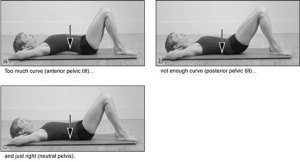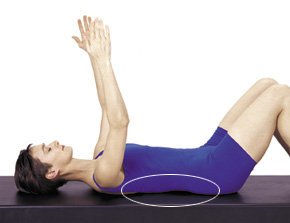First of all, there are different styles and variations of Pilates. The technique and training you may receive may slightly vary from one resource to another. I always put a lot of value in taking different styles of training, and really owning the one that suits you best and agrees with your values and goals.
It’s very important to be aware of the differences between both NEUTRAL spine and SPINAL IMPRINTING.
For our format PiYo, we encourage Spinal Imprinting because typically, the average person is taking a pilates class in a group setting, where one on one training technique is not available. We have to assume that the average person taking class has weak abdominals and if they attempt pilates exercises using neutral spine (or so they think) they can actual risk injuring their back as well as develop some extremity discomfort.
There are different opinions what spinal position is best and you will need to make that decision yourself alongside with your pilates trainer which suits you best, as well as for your body type and strength.
WHAT IS NEUTRAL SPINE?:
Neutral spine is the natural position of the spine when all 3 curves of the spine (cervical, thoracic & lumbar) are in good alignment. This is the strongest position for the spine when we are standing or sitting.
Many people habitually have their spine in one of these two positions, tucked or tilted. To be in neutral spine, you want to be in between these positions, with the lower abs flat and just a slight, natural curve of the lower spine off the floor.
Imagine that there is a cup of water sitting on your lower abdomen, just a couple of inches below your belly button. Allow your abdominal muscles to drop in toward your spine, making your belly flatter. Remember that you don’t want the water to spill, so your pelvis cannot be tipped forward or tucked under.
Rule of thumb is to keep your pelvis bones level (pubic bone and your ASIS bones)
WHAT IS IMPRINTED SPINE?:
Imprinting the spine is not the act of pressing your spine/back towards the floor BUT my using the muscles to draw down towards the floor. To get into imprinted spinal position, start with your pelvis in a neutral position and move your spine so that it’s straight with the floor. Use your abdominal muscles so that you’re not pressing or forcing it down; flattening your back, so that your spine would be completely flat on the floor without any gaps below your lower back and a floor. You may not be able to get into imprinted spine if you have a very big curve in your lower back and that is ok, just work to keep the pelvis level.
Visualize your spine lengthening and sinking down to the mat, lightly imprinting
If you have a bad back, especially if you have disk buldge – CHECK WITH YOUR DOCTOR
HOW DO YOU KNOW IF YOU ARE SUCCESSFUL WITH MAINTAINING YOUR CORE?
What I have found, is most people can achieve neutral spine, when you just use the techniques above to get into it. BUT, when you add movement, that’s typically when people lose that control.
This is why spinal imprinting is advised, as typically the contact of the back to floor “anchors” you more so you actively can keep pulling down the scoop of your transverse abdominal muscles while you perform the exercises.
Remember no matter what position you chose – your tail bone should be on the floor.



